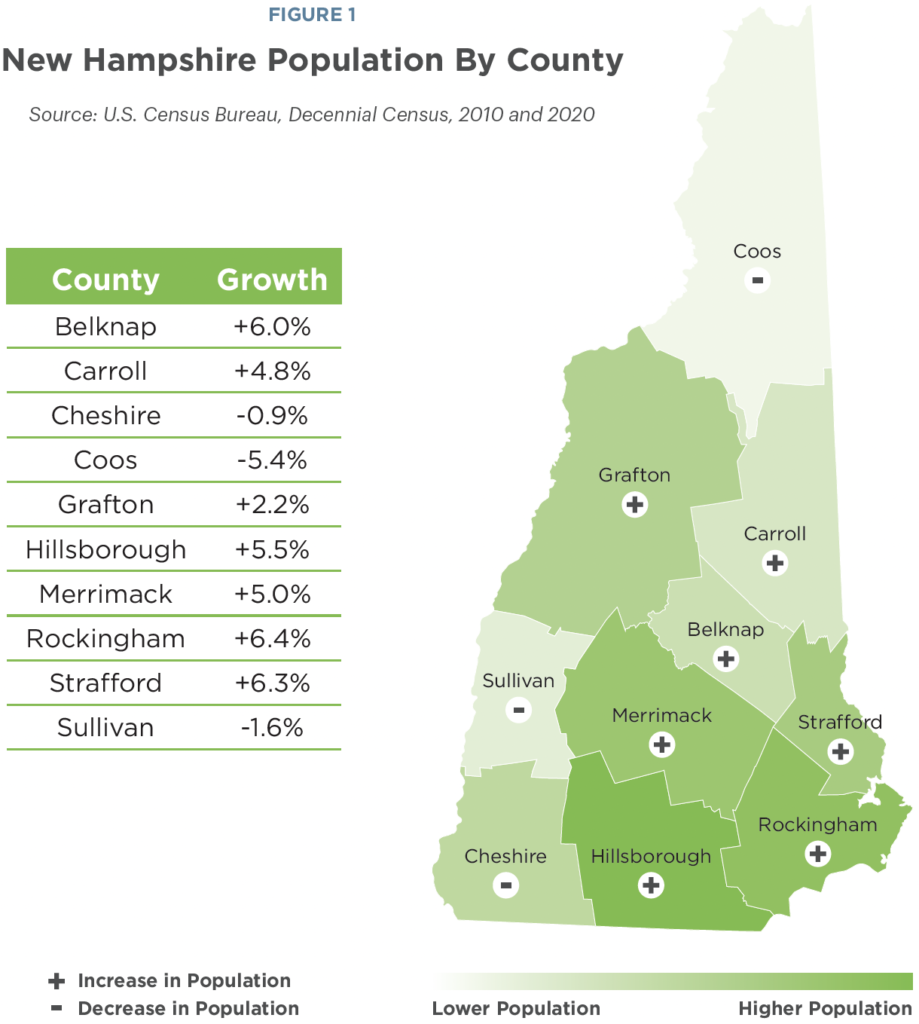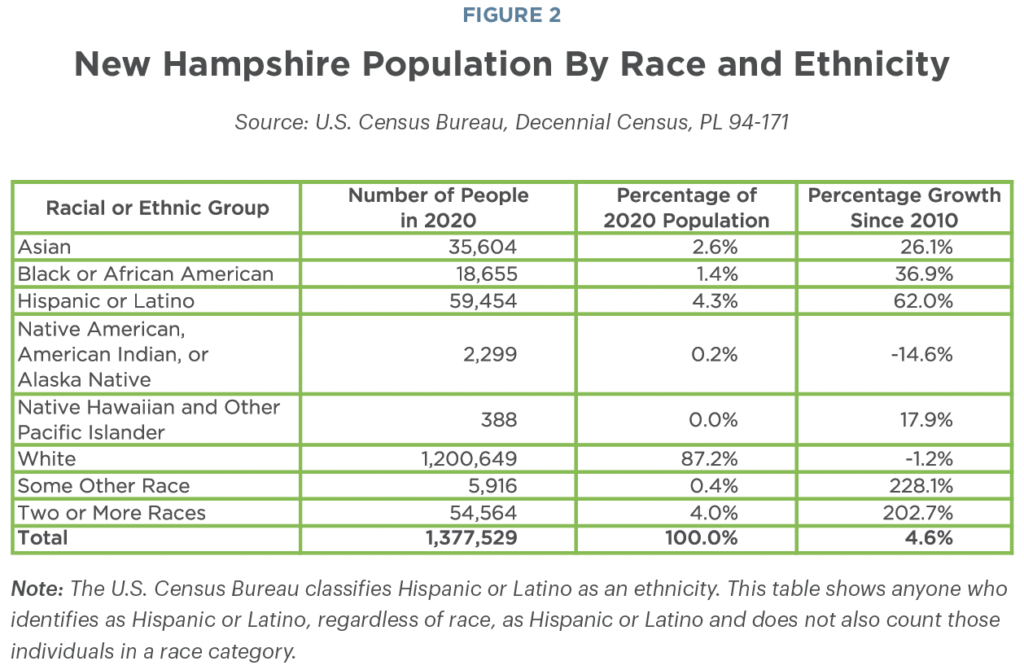This first edition of New Hampshire Policy Points provides an overview of the Granite State and the people who call New Hampshire home. It focuses on some of the issues that are most important to supporting thriving lives and livelihoods for New Hampshire’s residents.
New Hampshire Policy Points is intended to provide an informative and accessible resource to policymakers and the general public alike, highlighting areas of key concern. Touching on some important points but by no means comprehensive, each section within New Hampshire Policy Points includes the most up-to-date information available on each topic area as of October 2022.
The following section, Population and Demographics, is one of nine sections that frame this resource guide. Other sections cover Income and Economic Security, Economy and Jobs, Housing, Health, Education, Broadband Internet, Transportation, and How We Fund Public Services. The facts and figures included within this book provide useful information and references for anyone interested in learning about New Hampshire and contributing to making the Granite State a better place for everyone to call home.
To purchase a print copy or download a free digital PDF of New Hampshire Policy Points, visit nhfpi.org/policypoints
In the 2020 Census, the Granite State reported a total population of 1,377,529 individuals. The following graphic provides a snapshot of New Hampshire’s population and demographic data from the 2010 and 2020 Census.
The most populous counties were Hillsborough (422,937), Rockingham (314,173), and Merrimack (153,808), with the least populous counties being Coos (31,286), Sullivan (43,063), and Carroll (50,107). From 2010 to 2020, only three counties experienced a decline in their populations; Coos (-5.4 percent), Sullivan (-1.6 percent), and Cheshire (-0.9 percent) had fewer residents in 2020 than in 2010, while all other counties experienced population growth, ranging from Grafton’s 2.2 percent to Rockingham’s 6.4 percent.
New Hampshire’s population growth is fueled primarily by in-migration, rather than births.
New Hampshire’s population is becoming more diverse. U.S. Census Bureau data show that the fastest growing groups of new Granite Staters were among individuals identifying as a member of a racial or ethnic minority group in New Hampshire. The population of those identifying as white and non-Hispanic declined by 1.2 percent between 2010 and 2020, while the number of people identifying as a member of a racial or ethnic minority group in New Hampshire grew by 74.4 percent. About 20.2 percent of New Hampshire’s children identified as being from a race or ethnicity other than white and non-Hispanic in 2020.
New Hampshire’s child population overall has been declining, which is a troubling sign for the future of the state’s economy. However, the number of children of color grew in the state, suggesting they are more representative of the future of the state’s workforce and economy.
New Hampshire has an older population that is continuing to age. Estimates from 2021 indicated that, among the fifty states, only Maine had an estimated older median age than New Hampshire’s median age of 43.1 years, which was statistically similar to both Vermont and West Virginia.
These shifting demographic trends have important implications for the future of the Granite State and where future funding needs and opportunities will arise.
• • •
This publication and its conclusions are based on independent research and analysis conducted by NHFPI. Please email us at info@nhfpi.org with any inquiries or when using or citing New Hampshire Policy Points in any forthcoming publications.
© New Hampshire Fiscal Policy Institute, 2022.




